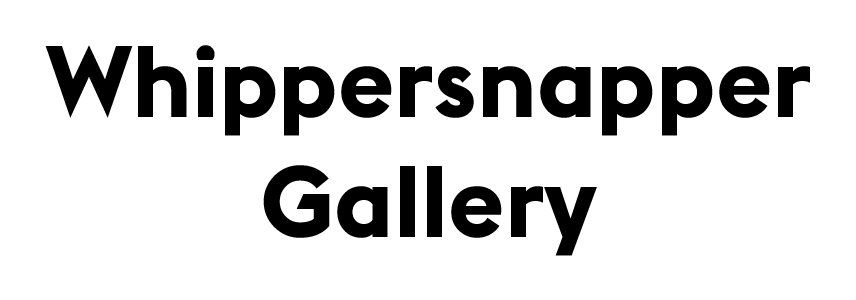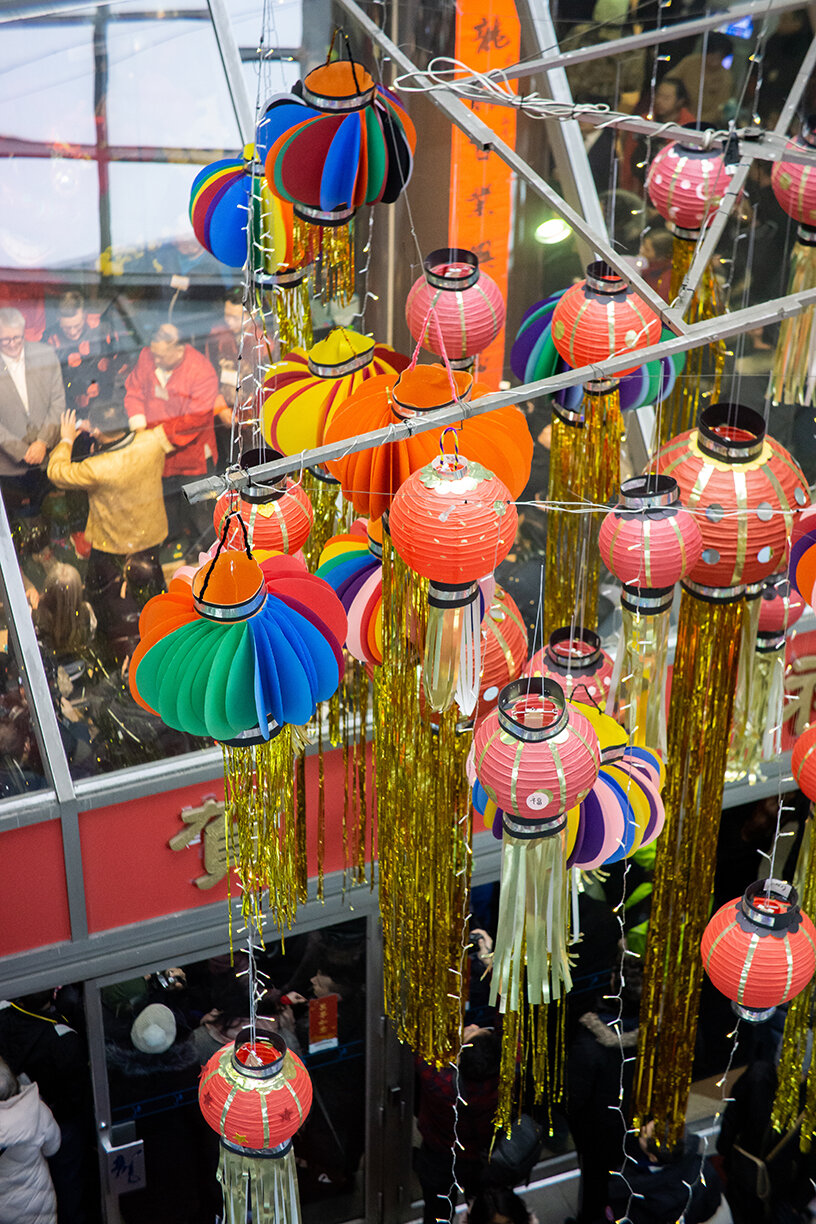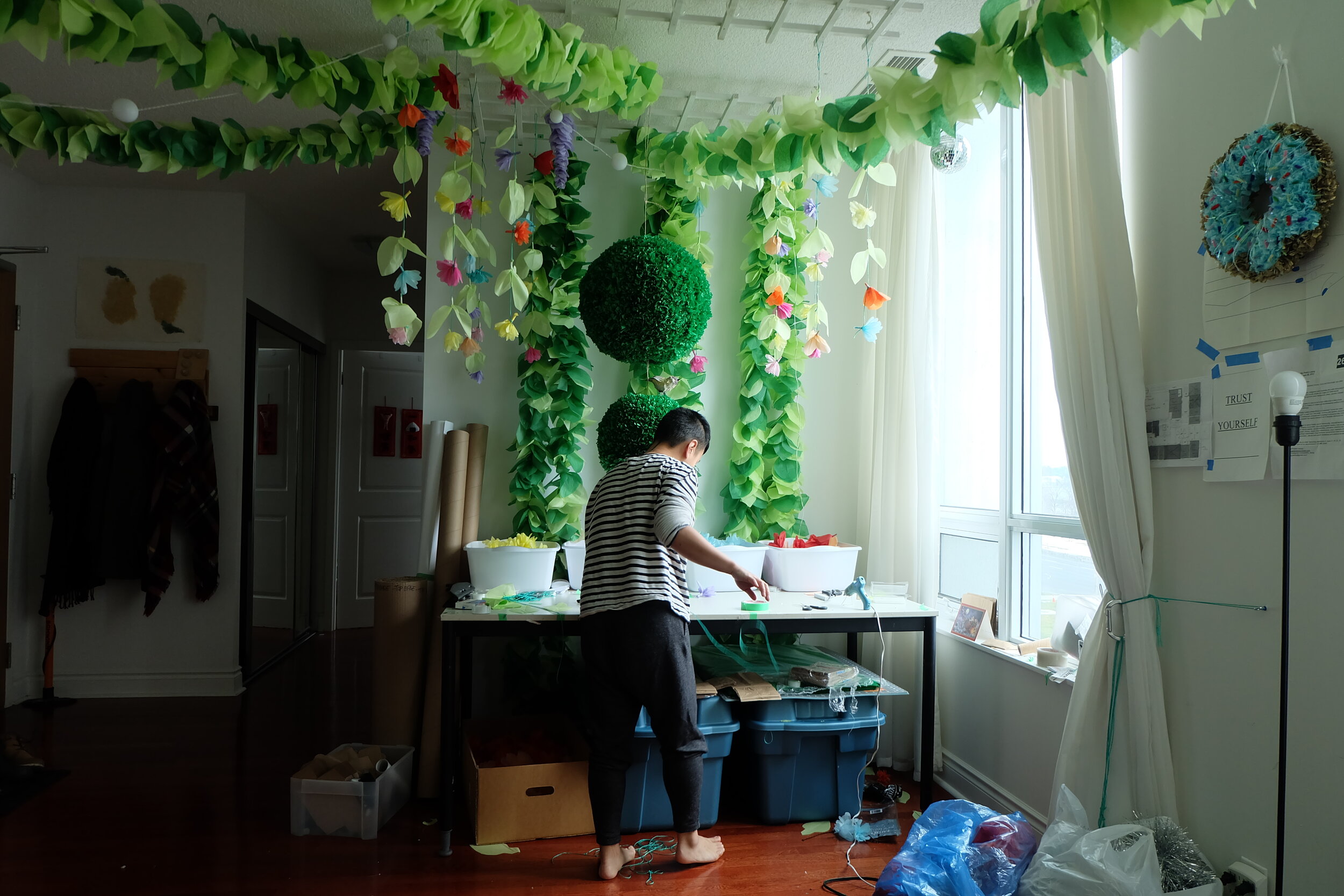Q&A PUFF Paddy x Whippersnapper Gallery
Artivism: Paddy Leung makes art to promote positive change in their community.
Whippersnapper Gallery is thrilled to still be presenting 'take care' by Paddy Leung within our physical space as a gentle reminder to Toronto (and beyond) as we have been adjusting to our new reality. We’d like to thank the HORIZON initiative, supported by Open Door grant from the Toronto Arts Council for encouraging this exhibition and conversation.
We look forward to the time when we are able to open our doors again, support more artists, and engage more so within our community.
For now, let’s encourage conversation and engagement as we welcome Paddy into our virtual space with this Q&A, and a fun art making activity for you. You can join us from wherever you are and show your support for your cause of choice from the comfort of your home!
Paddy and the Director, raven lam share online banter about the exhibition, the times, and more.
Paddy! Thanks for doing this! How are you? What’s happening? Can you describe yourself in 3 words for us?
Hi raven, It’s been a real pleasure to work on this project with Whippersnapper Gallery. I’m really grateful for this opportunity to share some love for our city. Lately I’ve been trying to focus on the positive, how this time has allowed me to be alone with my thoughts and given me more space and unstructured time to let my mind wander. It’s really helped me to find my balance and value solitude more. If I had to describe myself in 3 words, it would be determined, compassionate, and authentic. To me, authenticity means to live most attuned to one’s understanding of happiness. Living authentically has allowed me to love myself and others with more compassion, and to better serve my community. Also, I think anyone who knows me personally would say I’m very dorky. I love to laugh and dance and enjoy life.
Tell us a bit about how you ended up finding paper crafts as a medium? What called you towards it?
I have loved DIY crafts since I was a kid. I would spend hours drawing and making stuff with what I could find at home. When I went to high school, I spent all my time and energy working on school murals and building theater sets with my friends. In art school, my focus shifted to developing my fabrication skills and I experimented with all kinds of mediums. I was interested in pursuing stage design and movie sets at the time, but my father became really sick suddenly, and I decided to leave art school. During those crucial years, I took some time to find my purpose in life. I was feeling really low and I needed a change. I had boxes of craft materials tucked away for 2 years. One day I decided to make something fun for myself. Inside the boxes were stacks of coloured tissue paper. I started experimenting with it. That’s when I discovered the endless possibilities of paper. I still remember when I made my first paper sculpture piece, I felt exhilarated! It was exciting to make art again and I wanted to keep challenging myself. Never have I ever thought that paper arts would become my medium. I am so happy to be making art and spreading the magic.
“During the pandemic, I’ve seen more artists using public art as rhetoric and a tool to spark imagination and prompt discourse. Working as an artist has given me a wider perspective on the world. Art has given me a voice to hopefully empower people to use theirs. One of the most important things that I’ve learned is to just keep creating, because art inspires hope everywhere.”
When did you start combining the medium with community arts? How did you find the harmony between the two? Was it easy for you? Challenging?
In 2014 I began to emerge in the art scene. I wasn’t aware of the community arts sector, but it came into my life at a perfect time. On a whim, I decided to plan four different art workshops. My mission was to create a safe space that cultivated creativity and lifted people’s spirits. While planning the workshops, I started giving haircuts to raise funds. I wanted all of my workshops to be accessible. In the end, I was able to cover the material and venue costs. One of the greatest outcomes of the fundraiser was seeing a lot of my haircut patrons actually coming out to my workshops. There is something powerful that happens when people come together to make art.
The first workshops were held in smaller independent studios. My favourites included mask parties, tie dye, kite making, and sticker making. From there I was invited to contribute and develop a youth program called Free After Three at the AGO. After my contract ended, I continued to work independently, making custom large-scale paper sculptures and window displays, doing stage design, organizing workshops, and decorating for events. Recently, I’ve been working with community organizations such as VIBE Arts and The STEPS Initiative (STEPS) to develop project-based grants that combine my studio art practise with community engagement.
When I think about my artistic journey, I’m always grateful for all the opportunities that have led me to this path. I wouldn’t be able to do any of this without the support from everyone that believed in me. I had very little experience in hosting workshops and events, it was a bit overwhelming at first. I had to quickly figure out a system that worked for me. My first step was to break down my planning process into stages. Then I started to take down notes after every workshop I hosted to help me understand the areas that I could improve. I realized over time my energy was getting low. I had to learn to prioritize my mental and physical health. I believe that all of the steps that I took at that point helped me to become a better artist, arts educator, and person.
What is your favourite part of what you get to do as an artist? What is the most difficult?
As a queer Asian artist, art has given me the ability to express myself with authenticity. It has offered me a place to heal from my pain. I feel most connected when I am making art and sharing and caring for others. I believe art has the power to change and build resilience and deepen our hope for the future. When it comes to art, some common belief systems apply. We often reinforce the difficulties in making a living out of what you enjoy doing, or from being an artist - that it’s a tough industry with a lot of competition and that you’re unlikely to become successful at it. I want to dismantle this. We can create whatever life we want, achieve any goals we dream, and become whomever we desire. Don’t take on the beliefs that others try to impose on you, or on the world. Just do you.
Did you feel any changes to the artist community when the pandemic started? What were your fears there?
Since the pandemic started, many artists have lost their jobs and sought for financial support from our government. All of a sudden I had lost all of the work I had planned 6 months ahead. It was very stressful and heartbreaking to watch these opportunities disappear. As an artist and arts educator, a lot of my work revolves around being with people and making things together. I was not sure what I would be able to do with the new limitations being imposed, but that didn’t stop me from trying to find new ways to connect with people.
Did you see any gallery spaces, collectives, or organizations doing anything that stood out to you as filling the gap needed for artists amidst COVID-19?
There have been lots of changes in these last couple months. I’ve received immense support from VIBE Arts and STEPS. I’ve been able to create virtual programs with them. Thankfully, while making this wonderful window display for Whippersnapper Gallery, I was able to receive support in the form of an emergency grant from Toronto Arts Council. I’ve seen more artists and galleries holding art auctions to help raise money to support nonprofits and charities that protect the most vulnerable. Many large gatherings and events are canceled, however more galleries, organizations, performing artists, etc., are using online platforms to connect and create accessible virtual experiences.
I am so grateful at how on board you were with the project when I proposed it! Can you speak on your process with this specific project and how it may/may not differ from a project you would make in “normal” times?
I’ve wanted to show my work at Whippersnapper Gallery for a long time! I was thrilled to do this project with you. During the entire process, it was really easy to communicate our ideas. Right off the bat, I knew this project was going to be great. With your support, I was able to formulate a clear vision for our window display. Planning for this project was tricky because I couldn’t enter the space, so I had to work off of your measurements and guides. My strategy was to create an easy and stackable install. My original plan was to make “Take Care Toronto,” but in the end I decided it would be fun and challenging to create my own interpretation of the CN Tower.
“These times, and more specifically this project has really made me realize how flexible we can be in these times. I’ve seen so many artists, organizations and collectives have to flip what they used to be doing on their head and completely innovate. ”
How was letting someone else install your work? I hope I did a good job…You honestly set me up with the most clear instructions possible, I felt very supported by you even in your absence and I hope I came through for you as well.
This was the first time I’ve let someone else install my work! I wasn’t sure if my directions would translate well, but it came out exactly how I imagined it to be. You did such a great job and I’m really proud of us.
These times, and more specifically this project has really made me realize how flexible we can be in these times. I’ve seen so many artists, organizations and collectives have to flip what they used to be doing on their head and completely innovate. Have you learned anything specifically during this process?
Definitely, this time has taught me so much. Working on collaborative art projects, you face challenges that require totally new approaches. It’s reminded me how the ability to engage in collaborative action empowers us to move forward. I’ve learned to build trust, work fluidly, and communicate differently. This time has given me a unique opportunity to express myself in new ways and demonstrate positive change collectively through art.
Do you feel the need of the artists has shifted another degree with the current spotlight being put on the BLM movement? Or do you feel those needs have always been there? Is the process of making art with a political stance different from your normal practice? Or do you think they are more intertwined?
If we look back in history, artists have always played a key role in social movements. They’ve challenged cultural narratives, shifted mainstream imagery, and inspired emotions that empower people and poise them for action. The current moment feels like the apex of that effort. Black and Indigenous communities are dehumanized and endangered by systemic racism and the policies of an exploitative society. This is especially true within the Black trans community. We are outraged and frustrated with the unfairness within our system. More than ever, artists are channelling their energy into bringing more awareness to this movement. From murals, to performing arts, digital illustrations and more! - artists are using their powers to advocate justice, freedom, and equality for BIPOC communities everywhere.
This is one reason why I love being a part of the community art sector, because the work that is done there is so intertwined with social issues. I’m beginning to see more emphasis in building resources and support for Black arts and culture. These grant-making programs and funds support artists and organizations to seek opportunities that amplify and strengthen Black voices in art. I think it’s important to keep creating systemic, structural changes within the arts sector so that it can be truly diverse, inclusive, and welcoming to people from all backgrounds. There is still a long way to go to ensure that the creative industries are reflective of the world we want to see. I believe art helps people to understand something by giving them the opportunity to experience it directly. And through these encounters, art changes the world for the better.
PUFF Paddy takes us through the making of a 'Black Trans Lives Matter' poster or sign!
Personally, I feel having something public and bright with a positive message in the community during these moments has lifted me up when I pass it and we have been getting a lot of positive feedback about the benefits of having new installations and work available. Do you think public-accessible art is important in times of crisis? What do you think the benefits are? Or do you think we should be focusing on other things?
I think it’s beautiful that we’re able to bring some brightness into people’s lives. Public art has so much cultural value. It reflects and reveals our society. It can strengthen our communities and add uniqueness to our city. It provides us with transformative experiences from the past, present, and future. Plus, public art is free!
During the pandemic, I’ve seen more artists using public art as rhetoric and a tool to spark imagination and prompt discourse. Working as an artist has given me a wider perspective on the world. Art has given me a voice to hopefully empower people to use theirs. One of the most important things that I’ve learned is to just keep creating, because art inspires hope everywhere.
Anything you feel the people should know about? Be supporting, or staying updated on?
I’ll be making another window display for Big on Bloor Festival this summer and continuing my virtual programs. I’m also a part of VIBE Arts’ mentorship program called Desire Lines, which has allowed me to connect with younger emerging community artists and offer some knowledge and experience. I’ve been taking more time away from social media, but I will continue to share updates on my Instagram.













